#orava river
Text

Orava Castle, Oravský Podzámok, Slovakia,
Orava river in the village of Oravský Podzámok, Slovakia.
#art#design#architecture#history#style#luxury house#luxury homes#castle#luxurylifestyle#orava castle#orava river#dracula#nosferatu#slovakia#oravsky podzamok
2K notes
·
View notes
Text
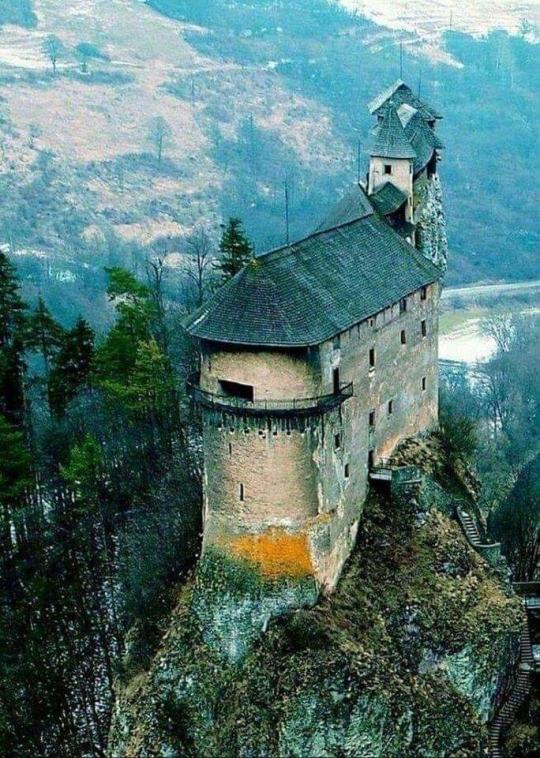
Castillo de Orava (1267) Eslovaquia
Is situated on high rock above Orava river in the village of Oravský Podzámok ,Slovakia .It is considered to be one of the most beautiful castles in Slovakia. The castle was built in the kingdom of Hungary in the thirteenth century.
Many scenes of the 1922 film "Nosferatu" were filmed here and many other films and tv series.
#Castillo de Orava#Orava castle#1267#13th century#Orava river#Oravský Podzámok#castle#Slovakia#kingdom of Hungary#old#high rock#architecture#renaissance#gothic#neo gothic#europe
153 notes
·
View notes
Photo




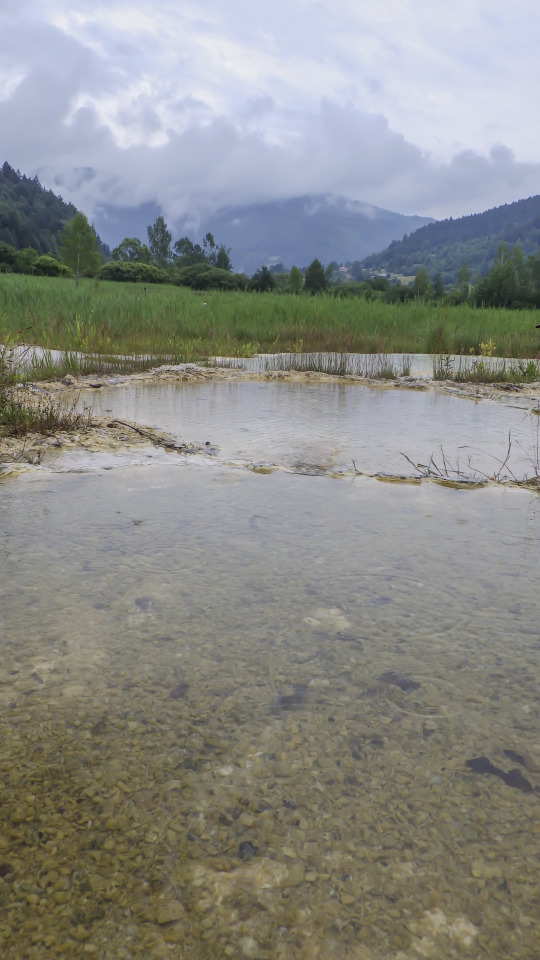





This year I spent my holydays in Slovakia. We traveled the Orava and Váh rivers on boats. We also visited the Orava Castle. Although it doesn't look like it in the photos, we had a pretty good weather. It only rained on the last day.
(You can't copy these photos and use them for commercial or private use without purchasing a license.)
0 notes
Text
Orava Castle, a medieval (13th century) stronghold on an extremely high and steep cliff by the Orava River, Slovakia.
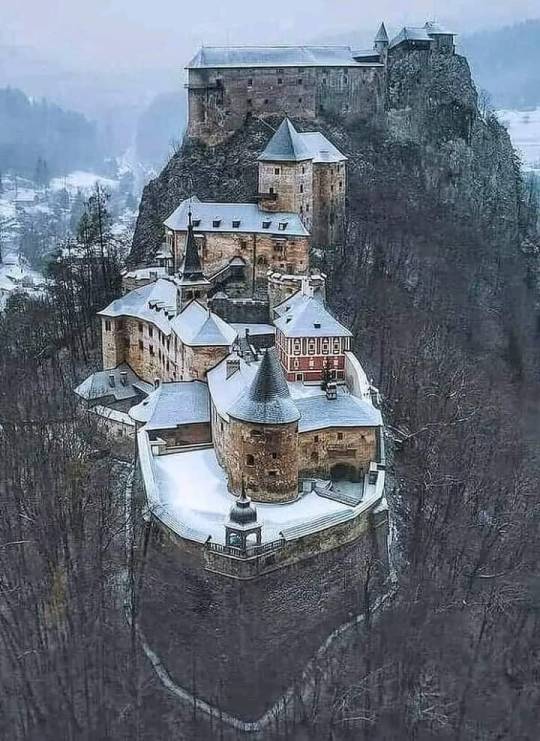
1K notes
·
View notes
Text
The list of TGE characters, gods and places from the glossary, for fic reading/writing/etc.
This list contains some spoilers.
Aäno: maid at Edonomee; daughter of Kevo
Adremaza: the master of the Athmaz’are
Aisava, Csevet: a courier; Later Edrehasivar VII’s secretary
Aizheveth: Witness for the Wisdom of Choharo; scholar of the second rank
Akhalarna: a god
Alcethmeret: the emperor’s residence within the Untheileneise Court
Alchenada: a noble house
Alchenin: a noblewoman
Amalo: a city in Thu-Athamar
Anmura: god of the sun and god of war
Anmur’theileian: a fortress built by the elves in the Evressai Steppes; called Memory of Death and Carrion-Bones by the Nazhmorhathveras
Anvernel: a country across the Chadevan Sea
Ashedro: a city in Thu-Athamar; seat of a university
Ashevezhko: the Barizheise goddess of the sea
Athmaz’are: the institution of the mazei of the Ethuveraz
Athamara: a river of the Ethuveraz; meets the Istandaärtha at Cairado
Atterezh, Clemis: the emperor’s Master of Wardrobe
Aveio: a town in Thu-Evresar
Avris: one of the emperor’s edocharei
Bakhoree: a manor belonging to the Drazhada in Thu-Cethor
Barizhan: the Ethuveraz’s southern neighbor; the land of goblins
Barizhin: the languague of Barizhan
Bazhavada: a noble house
Bazhevar, Dalera: nephew of the Count Bazhevel
Bazhevel: a count of Thu-Tetar; father of Stano Bazhevin
Bazhevin, Stano: fiancée of Ciris Drazhar; daughter of the Count Bazhevel
Belmaliven IV (dec.): Belmaliven Zhas, the 123rd Emperor of the Elflands; brother of Belmaliven V; father of Belvesena XI and Belmaliven VI
Belmaliven V (dec.): Belmaliven Zhas, the 124th Emperor of the Elflands; brother of Belmaliven IV
Belmaliven VI (dec.): Belmaliven Zhas, the 126th Emperor of the Elflands; son of Belmaliven IV; brother of Belvesena XI
Beltanthiar III (dec.): Beltanthiar Zhas, the 113th Emperor of the Elflands; defended by Hanevis Athmaza from Orava the Usurper
Beltanthiar V (dec.): Beltanthiar Zhas, the 121st Emperor of the Elflands; a child emperor who did not live to see adulthood
Belthelema IX (dec.): Belthelema Zhas, the 88th Emperor of the Elflands; husband of Valestho Drazharan
Belu: a soldier of the Hezhethora
Belvesena XI (dec.): Belvesena Zhas, the 125th Emperor of the Elflands; son of Belmaliven IV; brother of Belmaliven VI
Berenada: a noble house
Berenar, Eiru: the Witness for the Treasury; later Lord Chancellor; husband of Anzhevo Berenaran
Berenaran, Anzhevo: wife of Eiru Berenar
Benevolence of Marigolds: a Barizheise steamship
Beshelar, Deret: First Nohecharis to Edrehasivar VII
Bralchenar, Evrenis: an airship worker; a follower of Curnar
Bromada: a noble house
Bromar: the Witness for Foreigners
Bucarezh: a comic novelist
Cairado: a city in Thu-Athamar
Cala Athmaza: First Nohecharis to Edrehasivar VII
Calestho: a town in Thu-Evresar
Cambeshada: a noble house
Cambeshin, Dinan: a playmate of Ino Drazhin
Carcethlened, Amu: a Barizheise poet
Celehada: a noble house
Celehar, Thara: a Witness for the Dead; kinsman to Csoru Drazharan
Celehel: a count of Thu-Cethor; father of Csoru Drazharan
Celvaz: a country bordering the Ethuveraz
Ceredada: a noble house
Ceredel: a marquess of Thu-Cethor
Ceredin, Csethiro: great-niece of Arbelan Drazharan; daughter of the Marquess Ceredel
Cetho: the city surrounding the Untheleneise Court
Cethora: a river of the Ethuveraz; meets the Istandaärtha at Zhaö
Cetho Workers League: an organization of the working class people of Cetho
Ceth’ulimeire: the ulimeire of Cetho
Cethoree: a manor belonging to the Drazhada; Arbelan Drazharan was relegated here by Varenechibel IV
Chadevan Sea: the ocean of Barizhan’s southern coast
Chavada: a noble house
Chavar, Nurevis: son of Uleris Chavar
Chavar, Uleris: Lord Chancellor of the Ethuveraz
Chavel: a viscount of Thu-Athamar; brother of Uleris Chavar
Chevarimai: a god whose cult was suppressed
Choharo: a city in Thu-Istandaär
Cloud Horses, the: a bar in Amalo
Clunethada: the principal house of Thu-Athamar
Clunethar, Orchenis: Prince of Thu-Athamar; husband of Uleviän Clunetharan
Clunetharan, Ebreneän (dec.): sister of Varenechibel IV
Clunetharan, Uleviän: daughter of the Duke Tethimel; wife of Orchenis Clunethar, Prince of Thu-Athamar
Convent of the Lighthouse-Keepers: a convent for votaries of Ashevezhkho in Urvekh’
Corat’ Arhos: Cruelty of Water; the sea serpent
Corat’ Dav Arhos: the palace of the Great Avar of Barizhan
Corazhas: advisers to the emperor; the Corazhas is composed of seven Witnesses: the Witness for the Judiciate, the Witness for the Prelacy, the Witness for the Universities, the Witness for the Treasury, the Witness for the Athmaz’are, the Witness for Foreigners, and the Witness for Parliament
Csaivo: goddess of rivers, water, birth, and healing
Csedo: a town in Thu-Istandaär
Csovar, Tanet: the Witness for the Emperor
Cstheio Caireizhasan: goddess of the stars, of wisdom, and of magic
Curnar (dec.): a philosopher; executed in the reign of Varevesena
Dachen Mura: the Greater Jewels of the emperor
Daiano: a town in Thu-Cethor, north of Ezho; noted for its mineral springs
Dalar, Evru (dec.): husband of Oseian Dalaran; lover of Thara Celehar
Dalaran, Oseian (dec.): wife of Evru Dalar
Danivada: a noble house
Danivaran, Aro: a noblewoman
Danivin, Thiriän: Aro Danivaran’s daughter
Dazhis Athmaza: Second Nohecharis to Edrehasivar VII
Deshehar: the Witness for the Parliament
Dorashada: a noble house of Thu-Cethor
Drazhada: the ruling house of the Ethuveraz
Drazhar, Cora: page boy in Csoru Drazharan’s household; Maia Drazhar’s third cousin
Drazhar, Ciris (dec.): second son of Varenechibel IV and Pazhiro Drazharan (third son of the emperor); fiancé of Stano Bazhevin; killed in the crash of the Wisdom of Choharo
Drazhar, Ermezhis (dec.): an archduke of the Drazhada; an invalid
Drazhar, Idra: Prince of the Untheileneise Court; son of Nemolis Drazhar and Sheveän Drazharan; brother of Ino Drazhar and Mireän Drazhar
Drazhar, Maia: only child of Chenelo Drazharan and Varenechibel IV (fourth son of the emperor); relegated by his father first to Isvaroë (with Chenelo Drazharan) and then to Edonomee (with Setheris Nelar); see also Edrehasivar VII
Drazhar, Nazhira (dec.): elder son of Varenechibel IV and Pazhiro Drazharan (second son of the emperor); killed in the crash of the Wisdom of Choharo
Drazhar, Nemera (dec.): see Varenechibel IV
Drazhar, Nemolis (dec.): Prince of the Untheileneise Court; son of Varenechibel IV and Leshan Drazharan; husband of Sheveän Drazharan; father of Idra Drazhar, Mireän Drazhar, Ino Drazhar; killed in the crash of the Wisdom of Choharo
Drazharan, Arbelan: first wife of Varenechibel IV; put aside for barrenness and relegated to Cethoree
Drazharan, Chenelo (dec.): second legitimate daughter of Maru Sevraseched, the Great Avar of Barizhan; fourth wife of Varenechibel IV; mother of Maia Drazhar; relegated to Isvaroë by Varenechibel IV, where she died
Drazharan, Corivero (dec.): an empress; an opera, The Dream of the Empress Corivero, was written about her
Drazharan, Csoru: fifth wife of Varenechibel IV; kinswoman to Thara Celehar
Drazharan, Leshan (dec.): second wife of Varenechibel IV; mother of Nemolis Drazhar and Nemriän Imaran
Drazharan, Parmeno (dec.): an empress
Drazharan, Pazhiro (dec.): third wife of Varenechibel IV; mother of Nazhira Drazhar, Ciris Drazhar, and Vedero Drazhin; died in childbirth
Drazharan, Valestho: the empress of Belthelema IX
Drazharan, Sheveän: Princess of the Untheileneise Court; wife of Nemolis Drazhar; mother of Idra Drazhar, Mireän Drazhin, and Ino Drazhin
Drazhin, Ino: younger daughter of Nemolis Drazhar and Sheveän Drazharan; sister of Idra Drazhar and Mireän Drazhar
Drazhin, Mireän: elder daughter of Nemolis Drazhar and Sheveän Drazharan; sister of Idra Drazhar and Ino Drazhar
Drazhin, Vedero: daughter of Varenechibel IV and Pazhiro Drazharan
Duchenada: a noble house
Duchenel: a count of Thu-Cethor
Duchenin, Loran: second daughter of the Count Duchenel; niece of Uleris Chavar
Ebremis: master chef of the Alcethmeret
Echana: a lieutenant of the Untheileneise Guard
Edonara: the marshes of western Thu-Evresar
Edonomee: a manor belonging to the Drazhada; Maia Drazhar and Setheris Nelar were relegated here by Varenechibel IV
Edrehasivar VI (dec.): Edrehasivar Zhas, the 182nd Emperor of the Elflands
Edrehasivar VII: Edrehasivar Zhas, the 209th Emperor of the Elflands; see also Maia Drazhar
Edretanthiar III (dec.): Edretanthiar Zhas, the 172nd Emperor of the Elflands
Edrethelema III (dec.): Edrethelema Zhas, the 185th Emperor of the Elflands; the architect of the current Untheileneise Court
Edrethelema IV (dec.): Edrethelema Zhas, the 186th Emperor of the Elflands; son of Edrethelema III; builder of the Untheileneise Court
Edrethelema V (dec.): Edrethelema Zhas, the 187th Emperor of the Elflands; son of Edrethelema IV; builder of the Untheileneise Court; had Lisethu Pevennin put to death
Edrethelema VI (dec.): Edrethelema Zhas, the 188th Emperor of the Elflands; son of Edrethelema V; builder of the Untheileneise Court
Edrethelema VIII (dec.): Edrethelema Zhas, the 192nd Emperor of the Elflands; a child emperor who did not live to see adulthood
Edrevechelar XIV (dec.): Edrevechelar Zhas, the 201st Emperor of the Elflands; great-great-great-great-great-granduncle of Maia Drazhar
Edrevechelar XVI (dec.): Edrevechelar Zhas, the 203rd Emperor of the Elflands; father of Varenechibel I
Edrevenivar (dec.): Edrevenivar Zhas, the 157th Emperor of the Elflands; known as Edrevenivar the Conqueror; united the eastern and western Ethuveraz
Erimada: a noble house
Esaran, Echelo: steward of the Alcethmeret
Esha: one of the emperor’s edocharei
Eshoravee: a manor belonging to the Tethimada
Esret: a Barizheise page boy in the service of Vorzhis Gormened
Estelveriär: a country bordering the Ethuveraz
Esthoramire: the prison of the Untheileneise Court
Ethuveraz: the Elflands
Ethuverazhid Mura: the crown of the Elflands
Ethuverazhid Zhas: the Emperor of the Elflands
Ethuverazhin: the language of the Elflands
Evresartha: a river of the Ethuveraz; meets the Istandaärtha at Ezho
Evressai Steppes: home of the Nazhmorhathveras
Ezho: a city in Thu-Cethor; founded in the gold rush of Varenechibel III’s reign
Glorious Dragon: the ship of Shaleän Sevraseched
Gormened, Nadaro: wife of Vorzhis Gormened; cousin of Chenelo Drazharan
Gormened, Vorzhis: Barizheise ambassador to the Untheileneise Court; husband of Nadaro Gormened
Habrobar: a maker of signets
Halezh: a master of the Clocksmiths’ Guild
Halezho, Avro: a member of the Clocksmiths’ Guild; sister of Nedaö Vechin
Hanevis Athmaza (dec.): nohecharis of Beltanthiar III
Haru: servant at Edonomee
Hezhethora: the traditional guards of the Great Avar of Barizhan
Honor of Csedo: an airship
Ilinveriär: a country bordering the Ethuveraz
Imada: a noble house
Imaran, Nemriän: daughter of Varenechibel IV and Leshan Drazharan; wife of the Marquess Imel
Imel: a marquess of Thu-Athamar; husband of Nemriän Imaran
Inver: a soldier of the Hezhethora
Isheian: servant in the Alcethmeret
Ishilar: a corporal of the Untheileneise Guard
Istandaärtha: the principal river of the Ethuveraz
Isthanada: a minor house
Isthanar: the Witness for the Universities
Isvaroë: a manor belonging to the Drazhada; Chenelo Drazharan and Maia Drazhar were relegated here by Varenechibel IV
Kevo: cook at Edonomee; mother of Aäno
Khel-Avezher: self-styled king of the Chadevan pirates
Khever: a groom in the Untheileneise Court
Kiru Athmaza: Second Nohecharo of Edrehasivar VII; replacement for Dazhis Athmaza; a cleric of Csaivo
Lanthevada: a noble house
Lanthevel: a marquess of Thu-Athamar; Presider of the House of Blood; uncle of Iviro Lanthevin
Lanthevin, Iviro: niece of the Marquess Lanthevel
Leilis Athmaza: tutor of Idra Drazhar
Lohaiso: a city of Thu-Evresar
Loyalty of Lohaiso: an airship
Mazan’theileian: the hall of the Athmaz’are in the Untheileneise Court
Michen Mura: the Lesser Jewels of the emperor
Michen’theileian: the emperor’s audience hall
Mich’othasmeire: the Temple of All Gods in the Untheileneise’meire
Narchanezhen, Atho: an airship worker; a follower of Curnar
Nazhmorhathveras: the People of the Night Sky, the inhabitants of the Evressai Steppes; at war with the Ethuveraz
Nazhcreis Dein: a witch of the Nazhmorhathveras; albino
Nelada: a minor house
Nelar, Setheris: relegated to Edonomee with Maia Drazhar by Varenechibel IV
Nelaran, Hesero: wife of Setheris Nelar
Nelozho: a town in Thu-Cethor
Nemer: one of the emperor’s edocharei
Neraiis: a servant in the household of Csoru Drazharan
Nethen Ford: a ford of the Tetara
Nethenada: a noble house
Nethenel, Pazhis: a count of Thu-Tetar
Nevennamire: the prison beneath the Untheileneise Court
Olchevada: a noble house
Omdar: a comic novelist
Orava: known as the Usurper; the only magic-user ever to attempt the throne of the Ethuveraz
Orimada: a noble house
Orimar: the Courier General
Ormevada: a noble house
Orshan: goddess of crops and farmers
Orthema, Verer: Captain of the Untheileneise Guard; husband of Reneian Orthemo
Orthemo, Reneian: wife of Captain Verer Orthema
Orseva: a senior canon of the Untheileneise’meire
Oshet: a Barizheise gardener in the Alcethmeret
Osreian: goddess of the earth, of earthquakes and disaster, of artists and makers
Ozhis: a novice of the Athmaz’are
Parliament: the Parliament of the Ethuveraz comprises two houses, the House of Blood and the House of Commons
Pashavada: a noble house
Pashavar: the Witness for the Judiciate; husband of Ailano Pashavaran
Pashavar, Corvis: a young nobleman
Pashavaran, Ailano: wife of Lord Pashavar
Pashavel: a duke of Thu-Cethor
Pelar: Witness for the Wisdom of Choharo; scholar of the second rank
Pelchara: servant at Edonomee
Perenched, Ursu: natural daughter of Maru Sevraseched; a sea captain’s wife
Pevennada: an extinct noble house
Pevennin, Lisethu (dec.): a lady of the last house to lead a rebellion against the Drazhada
Polchina, Evet: a master of the Clocksmiths’ Guild
Porcharn: a country bordering the Ethuveraz
Puzhvarno: a city in Thu-Athamar, near Eshoravee
Radiance of Cairado: an airship
Reshema: a courier
Rohethada: a noble house
Rohethar, Idra: father of Sheveän Drazharan
Rohetharan, Zharo: mother of Sheveän Drazharan
Rosharis: the head groom of the Untheileneise Court
Salezheio: goddess of wind, winter, couriers, and storytellers
Sehalis Athmaza: Adremaza of the Athmaz’are
Selthevis: the secretary of Maru Sevraseched
Sevesar: Witness for the Wisdom of Choharo; scholar of the second rank
Sevezho: a town in Thu-Istandaär
Sevraseched, Holitho: a natural daughter of Maru Sevraseched; a votary in Urvekh’
Sevraseched, Maru: the Great Avar of Barizhan; father of Shaleän Sevraseched, Thever Sevraseched, Ursu Perenched, Holitho Sevraseched, Chenelo Drazharan, and Nadeian Vizhenka
Sevraseched, Shaleän: a natural daughter of Maru Sevraseched; a sea captain; her ship is the Glorious Dragon and her home port Solunee-over-the-Water, where she has a wife
Sevraseched, Thever: elder legitimate daughter of Maru Sevraseched
Shulihada: a noble house
Shulivar, Aina: an airship worker; a follower of Curnar
Solichel: a count of Thu-Tetar
Solunee-over-the-Water: a port across the Chadevan Sea
Sonevet Athmaza: the Witness for the Athmaz’are
Sorchev Zhas (dec.): a ruler of Csedo before the unification of the Ethuveraz
Stone Tree, the: a teahouse in Amalo
Strength of Rosiro: an airship
Talar: a Drazhadeise armsman
Tativada: a noble house
Tativin, Aizheän: a friend of Vedero Drazhin
Teia: a Barizheise page boy in the service of Vorzhis Gormened
Telimezh: Second Nohecharis to Edrehasivar VII
Tetara: a river of the Ethuveraz; meets the Istandaärtha near the border with Barizhan
Tethimada: a ducal house of Thu-Athamar
Tethimar, Eshevis: son of the Duke Tethimel
Tethimar, Teru: the Archprelate of Cetho
Tethimel: a duke of Thu-Athamar; one of the wealthiest landowners of the Ethuveraz
Tethimin, Paru: daughter of the Duke Tethimel
Thorchelezhen: a junior canon of the Untheileneise’meire
Thu-Athamar: a principality of the Ethuveraz
Thu-Cethor: a principality of the Ethuveraz
Thu-Evresar: a principality of the Ethuveraz
Thu-Istandaär: a principality of the Ethuveraz
Thu-Tetar: a principality of the Ethuveraz
Ubezhada: a noble house
Ubezhar, Odris: a friend of Eshevis Tethimar
Ubezharan, Hesero: wife of Odris Ubezhar
Ulis: the god of death and the moon
Ulzhavada: a noble house
Ulzhavel (dec.): a viscount of Thu-Cethor; committed suicide after being banished by Varenechibel IV
Untheileian: the hall of the Ethuverazhid Zhas, the emperor; the center of the Untheileneise Court
Untheileneise Court: the palace of the Emperors of the Ethuveraz; also houses the Judiciate, the Parliament, the Corazhas, the Mazan’theileian of the Athmaz’are, and the Archprelacy of Cetho
Untheileneise Guard: the guards of the Untheileneise Court; mostly, but not entirely, ceremonial
Untheileneise’meire: the othasmeire of the Untheileneise Court
Upazhera: a tributary of the Cethora
Urvekh’: a town in Barizhan, on the coast
Usharsu Athmaza (dec.): Adremaza of the Athmaz’are in the reign of Edretanthiar III
Ushenar: a doctor in the Untheileneise Court
Uvezho: a town in Thu-Cethor
Valno: a town in Thu-Evresar; where Akhalarana fell to earth
Varenechibel I (dec.): Varenechibel Zhas, the 204th Emperor of the Elflands; son of Edrevechelar XVI
Varenechibel II (dec.): Varenechibel Zhas, the 205th Emperor of the Elflands; son of Varenechibel I
Varenechibel III (dec.): Varenechibel Zhas, the 206th Emperor of the Elflands; son of Varenechibel II
Varenechibel IV (dec.): Varenechibel Zhas, the 208th Emperor of the Elflands; son of Varevesena; husband, in sequence, of Arbelan Drazharan, Leshan Drazharan, Pazhiro Drazharan, Chenelo Drazharan, Csoru Drazharan; father of Nemolis Drazhar, Nemriän Imaran, Nazhira Drazhar, Ciris Drazhar, Vedero Drazhin, Maia Drazhar; killed in the crash of the Wisdom of Choharo
Varevesena (dec.): Varevesena Zhas, the 207th Emperor of the Elflands; son of Varenechibel III; father of Varenechibel IV, Ebreneän Clunetharan
Vechin, Nedaö: an operatic soprano from Zhaö
Velvet: a horse
Veremnet: a game preserve in Thu-Cethor
Versheleen: islands in the Chadevan Sea
Verven’theileian: the Hall of Consultation, the meeting room of the Corazhas
Veschada: a noble house of Thu-Athamar
Veschar, Ciret: a friend of Eshevis Tethimar
Virenada: a noble house
Vizhenka: a captain of the Hezhethora; husband of Nadeian Vizhenka
Vizhenka, Nadeian: daughter of Maru Sevraseched; wife of Captain Vizhenka
Volsharezh: a “captain” in the Courier General’s office
Vorenzhessar: a town in Thu-Cethor, north and west of Ezho; birthplace of Reneian Orthemo
Wisdom Bridge: the bridge over the Istandaärtha
Wisdom of Choharo: an airship
Zhaö: a city in Thu-Athamar
Zhavanin, Suler: nursery maid of Mireän Drazhin and Ino Drazhin
Zherinada: a noble house of Thu-Tetar
Zhidelka: a Barizheise silk merchant and former pirate
45 notes
·
View notes
Text
stay tuned for my upcoming chronicles of osreth companion novel, Far Side of the River, in which we learn that The Bridge™ is actually the final step in orava the usurper’s age-long battle to reincarnate as a lich, and thara celehar, anora chanavar, cala athmaza, kiru athmaza and teru tethimar all team up to take him down once and for all; in the process, celehar learns that the land of the dead is but one shore away, entirely reachable, and that evru’s spirit has been calling across that river for years. the real plot is celehar’s temptation to damn himself and the rest of the world by actuating his newly realized power to bridge that river, thus forever rendering the transition from life to death into a dangerous two-way street—but there, shaking him from his rictus trance, is iäna pel-thenhior with eyes like the autumn sun and a worried pinch in his brows that has, since meeting celehar, become a lingering line on his lovely face, and what more physical proof does a man need than this to know that he is a black spot on the annals of the world? but then iäna like idk snaps his fingers in front of his face and goes WOULDST STOP THAT, PLEASE, THOU UTTER WALNUT?? THOU’RT WORRYING ME, PLEASE COME HOME and then they like makeout idk and in the background cala is just kicking orava’s gross skeleton body a lot while hanevis athmaza and his soldier nohecharis buddy (coughcough Valliēt Faädar, yes i named him, i care too much about half-sentence bits of lore) are giving solemn thumbs ups from The Far Side of the River, the end
15 notes
·
View notes
Photo

Orava Castle situated on a high rock above Orava river in village of Oravský Podzámok, Slovakia. It was built in Kingdom of Hungary in 13th century.
33 notes
·
View notes
Photo

https://ift.tt/3e5YXcN Castle, is situated on a high rock above Orava river in the village of Oravský Podzámok, #Slovakia. It is considered to be one of the most beautiful castles in Slovakia. The castle was built in the Kingdom of #Hungary in the thirteenth century. https://t.co/zyYeTCLxaC https://ift.tt/37xyMcl
0 notes
Photo

Oravský Hrad, Oravský Podzámok, Slovakia,
Photo by @bokehm0n
#art#design#castle#architecture#oravsky hrad#hrad#orava river#oravsky podzamok#slovakia#luxury house#luxury home#style#history#bokehm0n#fortress
389 notes
·
View notes
Photo

Very nice photo from @beauty_of_slovakia_ . . Orava Castle,Slovakia. . . - Oravský hrad sa nachádza v obci Oravský Podzámok. Okrem iného je táto dominanta Oravy aj obľúbeným miestom filmárov. Nakrúcala sa tu prvá čiernobiela verzia filmu Dracula z roku 1922. Ďalej sa tu nakrúcali filmy ako Kráľ drozdia brada, Princezná a žobrák, či Sokoliar Tomáš. #oravskypodzamok #orava #oravacastle #history #culture #nature #region #religion #architecture #river #hill #castle #slovensko #slovakia #beauty_of_slovakia #castelos #castillos #castles #castelli #chateau #schloss https://www.instagram.com/p/B45ePzIA7GE/?igshid=dr9pq0iwvv7o
#oravskypodzamok#orava#oravacastle#history#culture#nature#region#religion#architecture#river#hill#castle#slovensko#slovakia#beauty_of_slovakia#castelos#castillos#castles#castelli#chateau#schloss
0 notes
Text
Orava Castle





Orava Castle is located in Oravský Podzámok, Slovakia. The castle was built in the mid-13th century on a high rock above the Orava River upon an earlier wooden fortification. The original castle was of Romanesque and Gothic design, later altered to a Renaissance, Neo-Gothic style. Orava Castle is a complex of medieval-renaissance and baroque buildings. The castle was a stronghold for the Hungarian kingdom and served as an administrative and military center for the area as it protected an important road to Poland. Noblemen and county heads owned the castle. It has a long, interesting history. In 1556, Francis Thurzo received the castle in a pledge. Francis had a new chapel constructed, added support walls, and replaced the wooden stairs and annexes with stone. His son added the big bastion with a tunnel, a gatehouse, and a tower. The property remained the longest under Thurzo ownership. The castle suffered through a massive fire that lasted several days in 1800, Francis Zichy had most of the structure reconstructed and repaired, but the middle and upper castle weren’t fixed until 1861. The castle boasts 154 rooms, including a chapel, a Knights’ room, a weapon room, a torture room, a painting gallery, period-style furnishings, and archaeological collections. As administrator of the property, Ödön Zichy sought to make the castle a museum. The first exhibition took place in 1868. The structure underwent a period of dilapidation during WWII. An official museum was established at Orava Castle in 1967. Orava Castle is a national monument. It is open to the public.
8 notes
·
View notes
Text
Akkala Citadel Ruins

I’m contributing a short story to @memorabiliazine, a fanzine devoted to the architecture and archaeology of Breath of the Wild. My piece is an exploration of the Akkala Citadel Ruins, which is one of my favorite areas in the game simply because it’s such an interesting challenging to scale on foot.
In Age of Calamity, the interior of the Akkala Citadel is similar to that of Hyrule Castle, which makes sense both in terms of asset recycling and in terms of the citadel being an outpost of the castle. When I started thinking about the details of how the architecture of the Akkala Citadel would reflect its function as a military fortress, I began looking for real-world references.
While there’s not a one-to-one correlation, I think the Akkala Citadel Ruins are partially based on Orava Castle in Slovakia, which has also served as the inspiration for the Kaer Morhen mountain fortress in The Witcher and the set for an early cinematic adaptation of the novel Dracula.
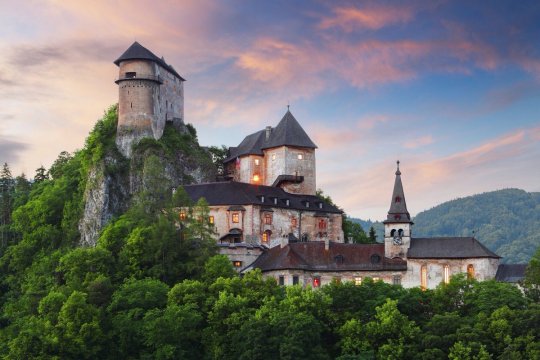
Like Akkala Citadel, Orava Castle was built directly into the rock of a hill overlooking the alluvial plains of a nearby river. The limestone of the cliff provided the building materials that were used first for the exterior walls and pavement and later to fortify the wooden structures that served as residences. The rock spur underneath the castle was left largely intact, as its sleep slopes provided excellent natural defense.
(There’s an interesting legend about the castle cliff, by the way. A nobleman made a deal with the devil, saying that Satan could have his soul if he could finish building the fortress in one night. Not even Satan could conquer the mountain, however, and so most of the slope remains forested and undeveloped.)
Because it occupies a strategic point along a major river, Orava Castle was attacked, burned, and rebuilt multiple times since it was first inhabited in the thirteenth century, so its architecture is an amalgamation of several different periods. The original fortress was built in a Romanesque style, with thick walls supported by semicircular arches. By the height of the Renaissance, the castle had gained Gothic and Neo-Gothic flourishes, with later additions featuring domed ceilings and narrow lancet windows.
For the most part, however, the interior of the castle reflects its utility. Most of its rooms have high ceilings with exposed wooden beams. The floors are wooden as well, although the floors on the lower stories were originally covered with packed earth to prevent water damage and humidity warping. The walls are unpainted white limestone irregularly broken by small rectangular window positioned slightly above eye level to allow in light and help regulate temperature.
The interior of the castle doesn’t have the sense of flow prized by modern architecture. Instead, it’s laid out as a somewhat haphazard collection of rooms, some of which are discrete buildings that were added as the pre-existing structure was repaired or rebuilt after battle. Different parts of the castle, such as its barracks, stables, armories, and kitchens, are connected on the outside via covered walkways, but most of the turrets contain circular stairwells that connect different buildings as well as different floors.
Orava Castle does not have a Sheikah Tower, obviously, but the Roman-style foundations of the structure could conceivably allow for a large central bore extending from its base in the rock cliff, as the gently curved arches supported by internal pillars that characterize its architecture would facilitate the construction of multi-storied circular walls.
Like Orava Castle, Akkala Citadel might fall to hostile forces, but the structure itself is remarkably sturdy. It stands to reason that it could remain intact for a hundred years in the wake of an apocalypse, especially if the Bokoblins and Moblins hanging out there have been keeping the place tidy.
#Legend of Zelda#Breath of the Wild#Age of Calamity#Memorabilia zine#Orava Castle#Zelda meta#architecture#ruins
40 notes
·
View notes
Photo
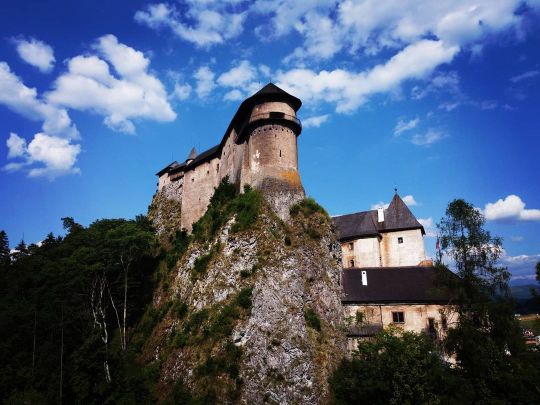
Gonna drop a few last pictures for Slovakia🇸🇰, before leaving Europe for Mama Africa. This is the beautiful Orava Castle🏰 from the 13th century, constructed on a hilltop with almost impossible physics. The small Orava river🏞️ is caressing the village of Oravský Podzámok for a picturesque backdrop. -- #Slovakia #slovakei🇸🇰 #SlovakiaCastle #CastlesOfInstagram #Hilltop #MedievalFortress #MedievalCastles #Castles #CastlePhotography #CastleFortifications #CastleOnAMountainTop #Orava #OravaCastle #OravaRiver #OravskyPodzamok #OravskyHrad #HauntedCastels #MysticCastles #MysteriousCastles #beautifulslovakia🇸🇰 #beautifulslovakia #FairyTaleCastle #FairyTaleCastles (at Oravský hrad / Orava Castle) https://www.instagram.com/p/CStnSBzDIxD/?utm_medium=tumblr
#slovakia#slovakei🇸🇰#slovakiacastle#castlesofinstagram#hilltop#medievalfortress#medievalcastles#castles#castlephotography#castlefortifications#castleonamountaintop#orava#oravacastle#oravariver#oravskypodzamok#oravskyhrad#hauntedcastels#mysticcastles#mysteriouscastles#beautifulslovakia🇸🇰#beautifulslovakia#fairytalecastle#fairytalecastles
0 notes
Photo

Orava Castle situated on a high rock above Orava river in village of Oravský Podzámok, Slovakia. Built in Kingdom of Hungary in 13th century CE.
Orava Castle stands on site of an old wooden fortification, built after Mongol invasion of Hungary of 1241 CE.
11 notes
·
View notes
Photo

Describe a picture - Forest vocabulary
Being asked to describe a picture is probably the most classic, complete and frustrating language exercises. I’ve recentely started to include them in my studying because they’re... incredibly effective. I tried to be as precise as possible. Feel free to correct me if you see a mistake.
metsä: forest
puu/puut: tree/trees
lehti/lehdet: leaf/leaves
kuolleet/puhdonneet lehdet: dead/fallen leaves
kaarna: bark
puun runko: tree trunk
juuri/juuret: root/roots
oksa: branch
varpu: twig
mänty: pine tree
männynkäpy: pine cone
tammi: oak tree
tammenterho/terho: acorn
kuusi: spruce tree
pensas: shrub/bush
saniainen: fern
lehtisammal: moss
kivi: rock
ruoho: grass
sieni: mushroom
path: polku
pöllö/huuhkaja: owl
harakka: magpie
tikka: woodpecker
linnunpesä/pesä: bird’s nest/nest
orava: squirrel
hevonen: horse
villisika: boar
porsas: piglet
kettu: fox
ketunpennut: fox pups
siili: hedgehog
leppäkerttu: ladybug/ladybird
silta: bridge
joki: river
järvi: lake
ranta: beach
ratsastaja: rider
purjetaulailija: windsurfer
purjevene: sailboat
piknik/piknikki: picnic
grilli: barbecue
pyyhe: towel
kylmälaukku: cooler/cool box
pallo: ball
pariskunta: couple (people)
lapsi/laspet: child/children
vanhus: old person/senior
Verbs
kyyhöttää: to perch
leikkiä: to play
kävellä: to walk
juosta: to run AND to flow (water)
sienestää: to gather mushrooms
ratsastaa: to ride (horse/animal)
purjelautailla: to windsurf
grillata: to grill
Image credit: Anne Suess
12 notes
·
View notes
